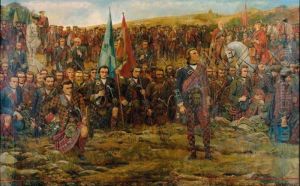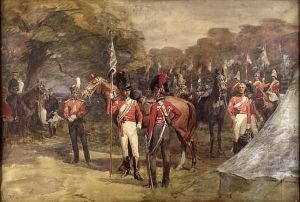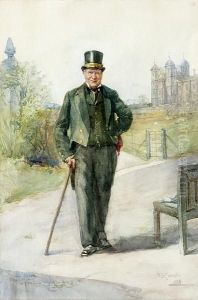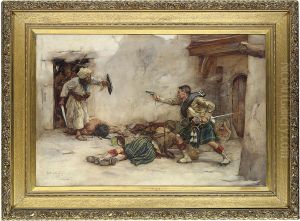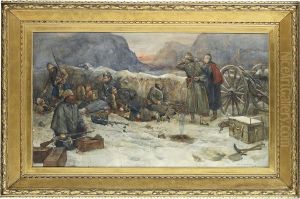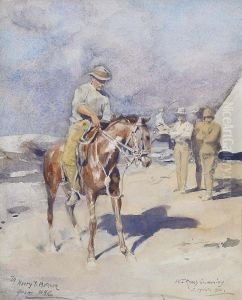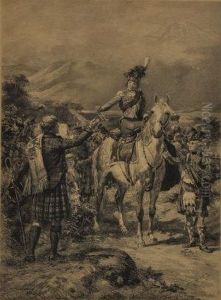William Skeoch Cumming Paintings
William Skeoch Cumming was a Scottish artist born in Glasgow on April 15, 1864. His early education and influences in art remain relatively obscure in historical records, but it is known that he was active in the late 19th and early 20th centuries, a period that saw a flourishing of artistic talent in Scotland, particularly in Glasgow.
Cumming began his artistic career as a stained glass designer and worked for several firms in Glasgow. This experience with stained glass would later influence his painting technique, which often incorporated vibrant colors and a strong sense of light. His transition to canvas allowed him to explore a variety of subjects, including landscapes, portraits, and genre scenes.
As a painter, Cumming became associated with the Glasgow Boys, a group of artists who sought to challenge the academic standards of the time by introducing new ideas of realism and naturalism into their work. The Glasgow Boys were heavily influenced by the French Impressionists and their Scottish contemporary, James McNeill Whistler. While not as prominent as some of the leading members of the group, such as James Guthrie or John Lavery, Cumming contributed to the movement with his keen observation of everyday life and his use of color.
Cumming's work was exhibited in various venues, including the Royal Scottish Academy and the Royal Glasgow Institute of the Fine Arts. Despite a relatively modest reputation during his lifetime, his art captures the dynamic changes in Scottish society and the evolution of artistic styles at the turn of the century.
William Skeoch Cumming died on May 6, 1929. His paintings today are appreciated for their historical value and their place in the narrative of Scottish art history. They can be found in private collections as well as public institutions, including galleries and museums that showcase the work of the Glasgow Boys and the broader Scottish artistic legacy.
